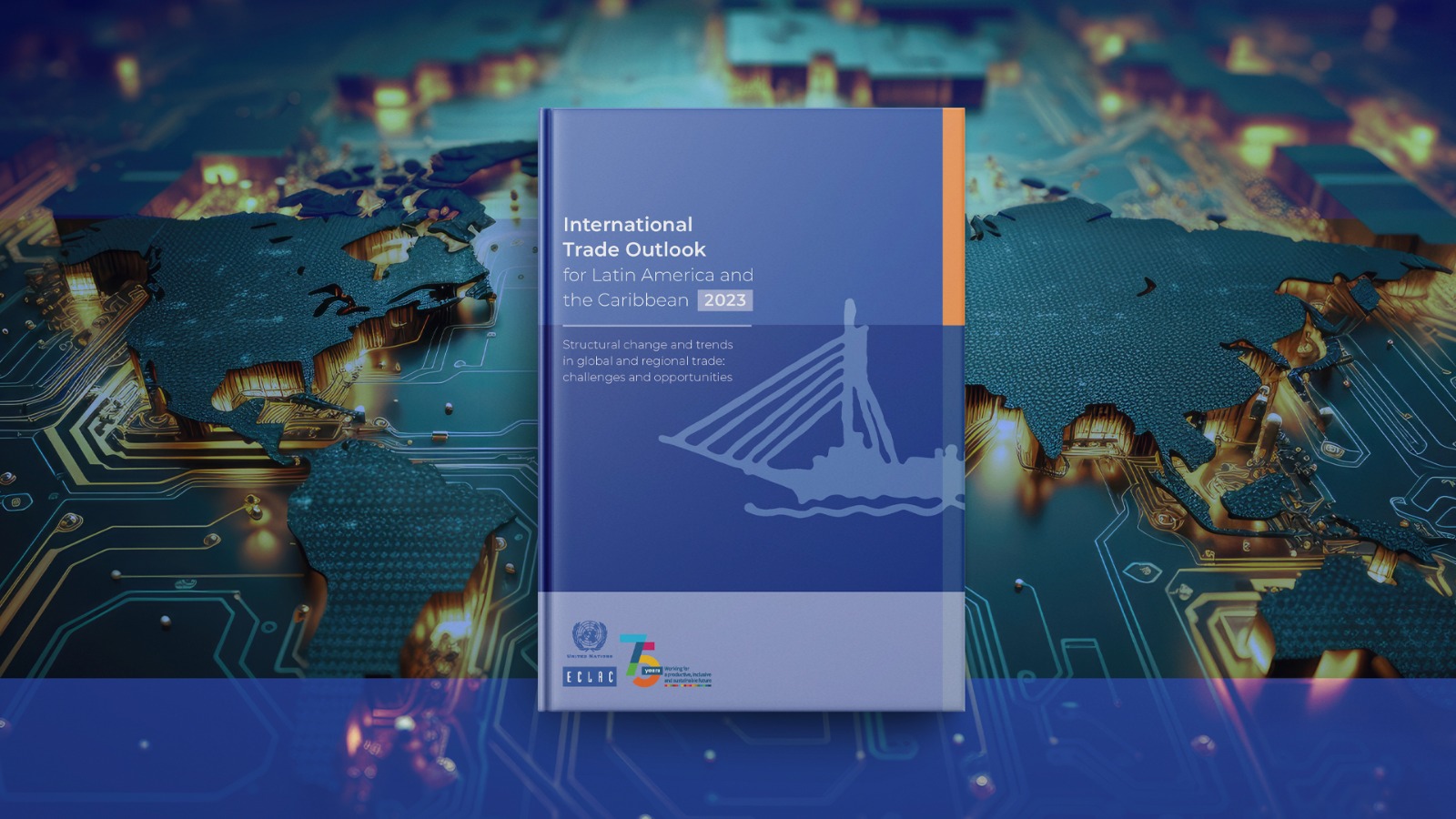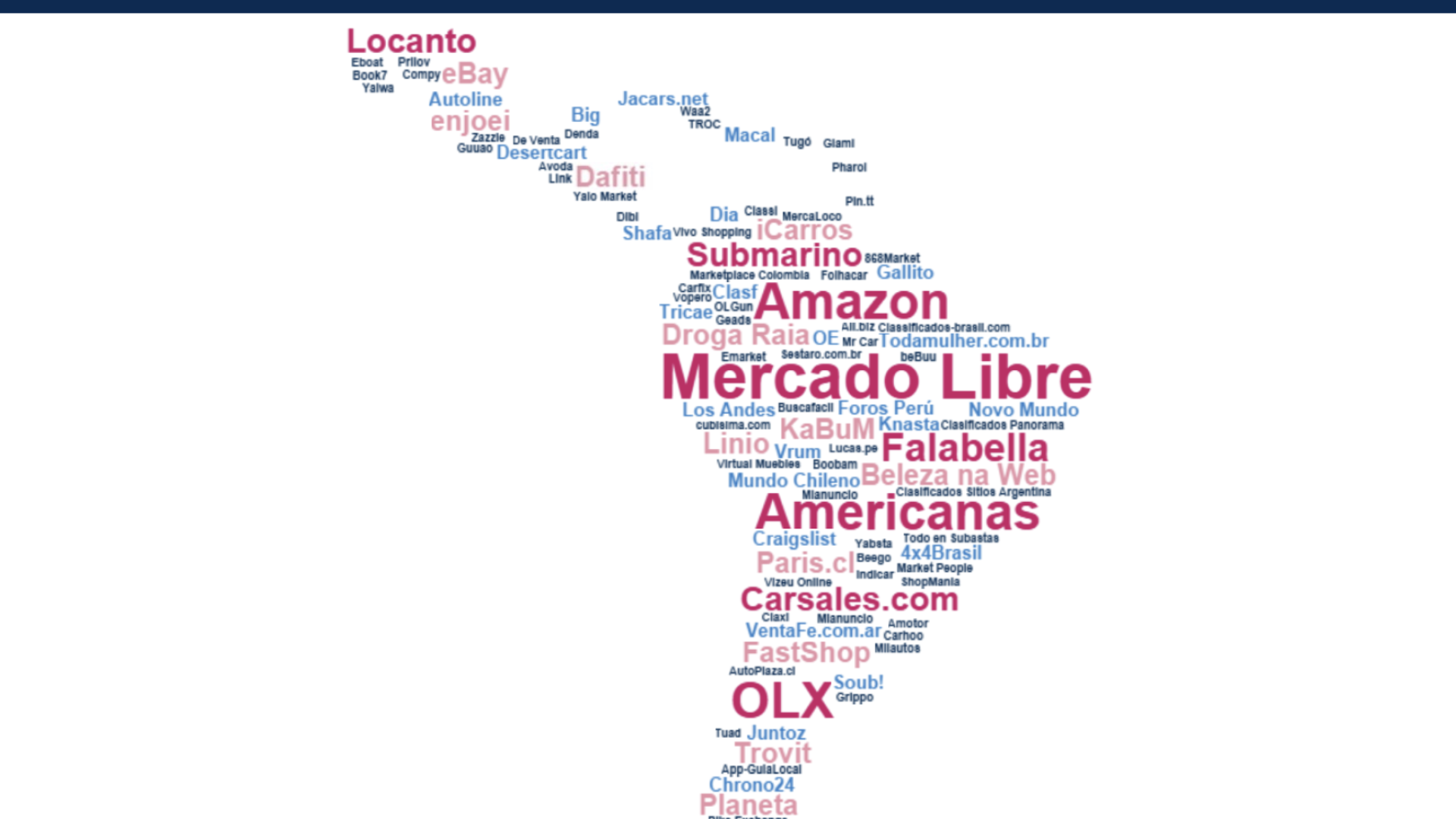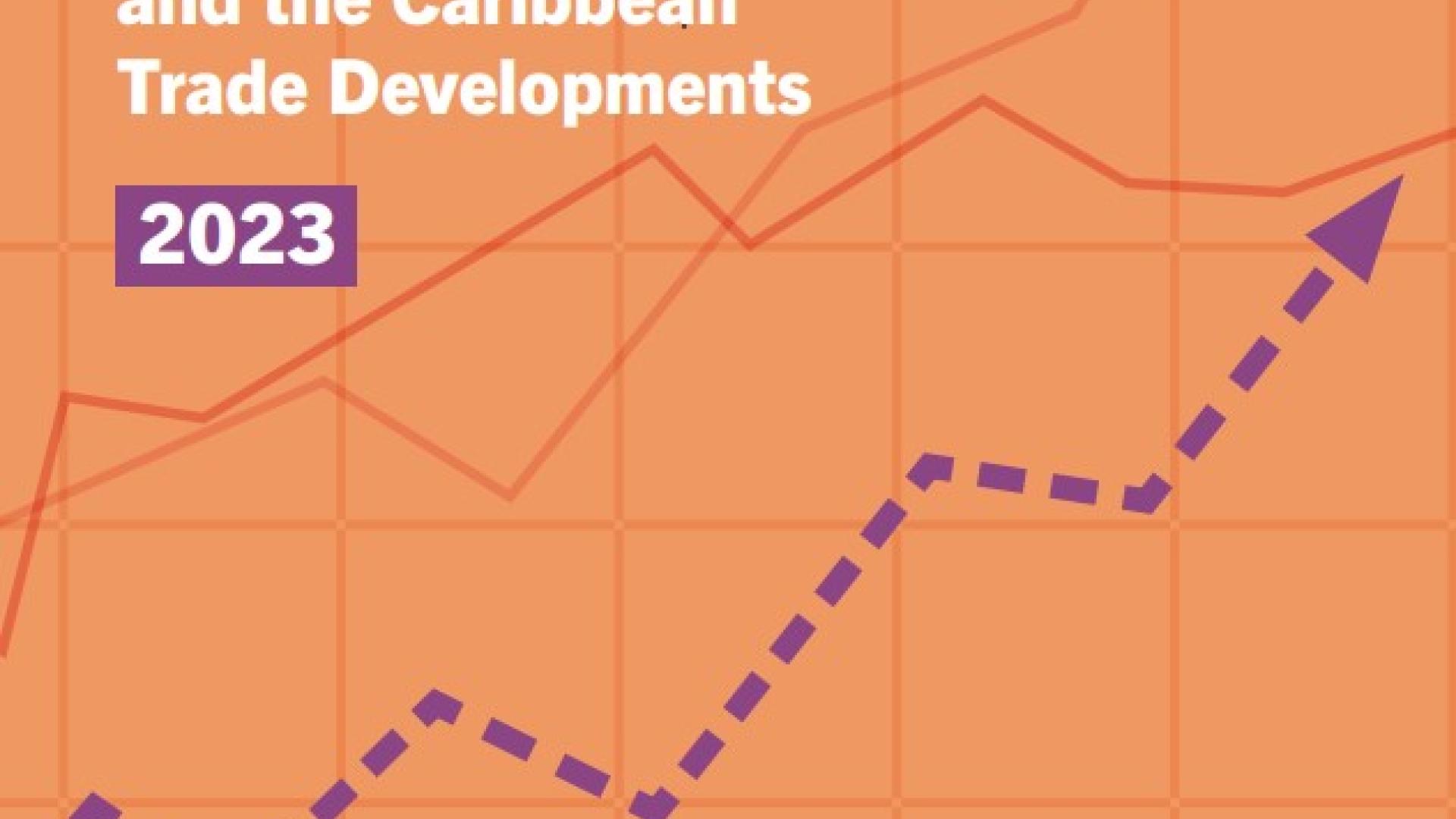Briefing note
The value of goods exports from Latin America and the Caribbean will fall by 2% in 2023, in a context of great weakness in global trade, ECLAC indicated today upon presenting a new annual report on the performance of the region’s foreign trade.
The report entitled International Trade Outlook for Latin America and the Caribbean 2023. Structural change and trends in global and regional trade: challenges and opportunities was unveiled at a press conference led by the United Nations organization’s Executive Secretary, José Manuel Salazar-Xirinachs.
According to the report, the volume exported by the region will increase by 3%, but this will not be enough to offset the 5% decline in prices for its export products. With regard to imports, their value is seen falling by 6%. This figure reflects the weakness in regional economic activity, with GDP growth forecast at just 1.7% in 2023, according to the latest estimate provided by the Economic Commission for Latin America and the Caribbean (ECLAC) in September.
Exports from South America and the Caribbean will exhibit the biggest declines in terms of value (-5% and -6%, respectively). Meanwhile, shipments from Central America and Mexico are seen growing by 2% due to their reduced dependence on raw materials and their stronger links to the United States market. The countries that will experience the sharpest drops in exports are mostly net exporters of hydrocarbons or agricultural products. Twelve countries in the region are seen increasing the value of their exports in 2023, while only seven countries are forecast to increase their imports.
Regional service exports will grow again in 2023, with an increase in value estimated at 12%, driven mainly by tourism and “modern services,” which include a broad range of services provided digitally, such as information technology, financial and business services. Although they will be notching a third straight year of growth, regional service exports are slowing in 2023 as tourism approaches its pre-pandemic levels.
“The challenge remains to diversify the export basket and make it more sophisticated in order to reduce excessive dependence on raw materials, especially in South America. To that end, the implementation of productive development policies with a cluster approach in strategic sectors is crucial,” José Manuel Salazar-Xirinachs affirmed at the report’s presentation.
According to the recommendations set out in the publication, in a context of growing regionalization of global trade, it is critical to deepen regional integration since it would allow for reducing vulnerability in a more uncertain global trade environment and generating efficient scales of production for the region’s industries.
The report indicates that the weakness in global trade is the result of a deceleration in the global economy, in a context of high interest rates in the United States and Europe, a crisis in the real estate sector in China, and growing geopolitical tensions. The most recent projections by the World Trade Organization (WTO) point to the volume of global trade in goods growing by just 0.8% in 2023. The WTO estimates a 3.3% expansion in 2024, which, if it occurs, should invigorate the region’s exports.
The second chapter of the International Trade Outlook 2023 addresses the trade relationship between Latin America and the Caribbean and China. In the 2000-2022 period, goods trade between the region and China expanded 35 times over, while the region’s total trade with the world only increased fourfold. Bilateral trade, which scarcely exceeded $14 billion dollars in 2000, totaled nearly $500 billion dollars in 2022. Hence, in 2010 China displaced the European Union as the region’s second-biggest trading partner and became South America’s top trading partner.
Exports to China almost exclusively consist of raw and processed natural resources, and imports are nearly all manufactured goods. Six products alone (soybeans, copper and iron ore, crude oil, copper cathodes and beef) represent 72% of the region’s exports to China, and they are concentrated in a handful of countries, mainly in South America (93%). Meanwhile, the growing penetration of Chinese manufactured goods in the region has expanded access for households and businesses, but has also displaced regional production. The net result is that this has deepened the commodities export specialization, especially in South America.
From ECLAC’s perspective, the food sector offers the best prospects for diversifying exports to China and making them more sophisticated in the short term. To achieve this, the Commission recommends tackling existing non-tariff barriers and strengthening market intelligence to better meet Chinese consumers’ needs and tastes. Furthermore, the report urges the region’s countries to attract Foreign Direct Investment (FDI) to activities for processing strategic natural resources (lithium, for example), generating upward linkages with manufacturing activities (such as batteries and electric vehicles).
In its third chapter, the United Nations regional commission’s flagship annual report gives an overview of Latin American and Caribbean countries’ progress and challenges in relation to trade facilitation, an issue that has acquired growing relevance throughout the world in recent years.
This chapter presents the results of a survey carried out by ECLAC during the first half of 2023 in 26 of the region’s countries, measuring their degree of progress on issues such as the publication of trade regulations on the Internet, the establishment of Electronic Single Windows for International Trade, Authorized Economic Operator mechanisms, and the selective inspection of merchandise using risk management, among others.
The 26 countries attained an average implementation rate of 71% of the main trade facilitation measures. However, the region still has a great deal of room to improve its performance on the digitalization of trade procedures and paperwork. To do so, it is crucial that the implementation and interoperability of Electronic Single Window systems be accelerated.
The document stresses that making progress on trade facilitation is critical since it promotes the internationalization of Small and Medium-sized Enterprises (SMEs), which are disproportionately affected by cumbersome trade procedures; it attracts new investments in the context of nearshoring processes; it promotes regional economic integration; and it improves the State’s efficiency and serves to fight corruption.
The report also underlines the need to gradually close the regional gap in transport infrastructure and logistics. To achieve this – and given the current context of limited fiscal space – it is essential to explore innovative financing options such as funds for green infrastructure and institutional investors. Finally, the report recommends moving towards multimodality, reducing the current excess dependency on road transport and giving more space to railways and waterways.



